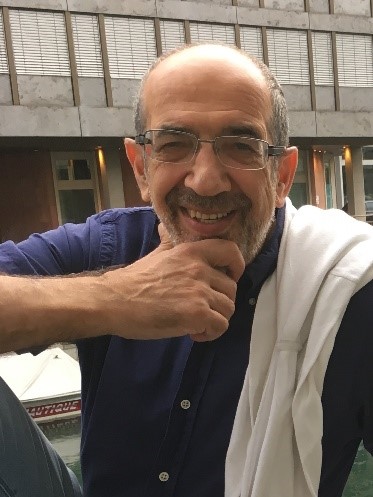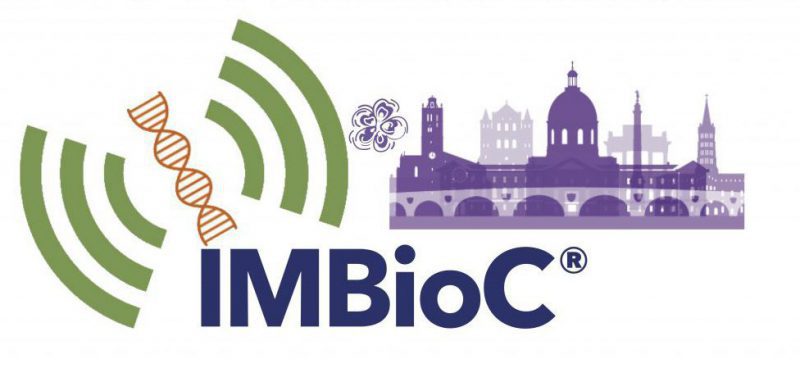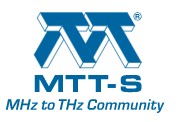WATER AND ITS DIELECTRIC SIGNATURE.
NEW MARKER FOR BIOSENSING
Prof. Yuri Feldman
The Hebrew University of Jerusalem, Department of Applied Physics,
Edmond J. Safra Campus, Jerusalem 91904, Israel
Whenever water molecules interact with either dipolar or charged systems, the main water dielectric relaxation peak broadens. If a solute is dipolar in nature, new solute-water clusters are created due to dipole-dipole interactions. It leads to the “red shift” of the dielectric loss maximum frequency. In the case of ionic solutions, another cluster structure develops, due to dipole-charge interactions and a “blue shift “is observed. In the general case when a solute molecule has both charged and dipole groups, the dielectric loss maximum demonstrates a “red” or “blue” shift, depending on the entity concentration. In all aqueous solutions, the water-solute interactions can be considered as dipole-matrix interactions in which water is the dipole subsystem. The phenomenological 3D trajectories approach was applied to the results of isothermal dielectric measurements of different concentrations of the following aqueous solutions: Hydrocarbons, NaCl and KCl, AMP and ATP, Amino Acids [1-4]. The parameters of the main water peak define a trajectory that can clarify the nature and rate, at which water interacts with the solute. In this paper, we extend this approach from comparatively simple solutions to the complexity of Red Blood Cells (RBC) suspensions by monitoring the RBC cytoplasm under different external conditions [5,6]. Dielectric measurements of RBC suspensions in the frequency region of 100 MHz to 50 GHz as a function of aging or external glucose concentration also reveal a distinct time point or glucose concentration after which the spectra are radically changed. The conclusion is that the dielectric response of the cytoplasm in microwaves is due to the water therein and its interaction with physiological active components in cytoplasm. This opens a window of opportunity to exploit this for the non-invasive monitoring of diabetes or to non-invasive control of the quality of Stored RBC in a Blood bank in order to manage the inventory.
References
- E. Levy, A. Puzenko, U. Kaatze, P. Ben Ishai, Y. Feldman, Dielectric spectra broadening as the signature of dipole-matrix interaction. I. Water in nonionic solutions, J. Chem. Phys., (2012) 136, 114502.
- E. Levy, A. Puzenko, U. Kaatze, P. Ben Ishai, Y. Feldman, Dielectric spectra broadening as the signature of dipole-matrix interaction. II. Water in ionic solutions J. Chem. Phys., (2012) 136, 114503.
- A. Puzenko, E. Levy, A. Shendrik, M.S. Talary, A. Caduff, Y. Feldman, Dielectric spectra broadening as a signature for dipole-matrix interaction. III. Water in adenosine monophosphate/adenosine-5′-triphosphate solutions, The Journal of chemical physics, (2012) 137,194502.
- E. Levy, S. Cerveny, I. Ermolina, A. Puzenko, Y. Feldman, Dielectric spectra broadening as a signature for dipole-matrix interaction. IV. Water in amino acids solutions, J. Chem. Phys., (2014) 140 135104.
- E. Levy, G. Barshtein, L. Livshitz, P. Ben Ishai1 and Yu. Feldman, “The Vitality of Human RBC and its connection to cytoplasmic water: I. The glucose concentration influence” Journal Physical Chemistry B (2016), 120, 10214.
- E. Levy, M. David, G. Barshtein, S. Yedgar, L. Livshits, P. Ben Ishai, and Yu. Feldman, “Dielectric Response of Cytoplasmic Water and Its Connection to the Vitality of Human Red Blood Cells: II. The influence of storage”, Journal Physical Chemistry B (2017), 121, 5273.

Yuri Feldman received the M.S. degree in radio physics and Ph.D. degree in molecular physics from the Kazan State University, Kazan, USSR, in 1973 and 1981, respectively. From 1973 to 1991, he was with the Laboratory of Molecular Biophysics, Kazan Institute of Biology, Academy of Science of the USSR. In 1991, he moved to The Hebrew University of Jerusalem, Israel, where he is currently a Full Professor and the Head of the Soft Condensed Matter Physics Laboratory. He has spent over 40 years in the field and has more than 400 scientific publications related to dielectric spectroscopy and its applications. He holds 15 patents in the areas of electromagnetic properties of the matter. In 1992 and 2010, the Israel Government acknowledged his work with an award for the outstanding contribution to the development of Israel Science; in 1998, he received the Kaye Award for the best innovation and invention. Feldman is a Director of the Centre for Electromagnetic Research and Characterization (CERC); he is a Member of the Boards of International Dielectric Society (IDS) and International Society for Electromagnetic Aquametry (ISEMA). His current interests include broadband dielectric spectroscopy in frequency and time domain; theory of dielectric polarization and relaxation; relaxation phenomena and strange kinetics in disordered materials; electromagnetic properties of biological systems in vitro and in vivo.
Selected recent publications:
- V. Raicu and Yu. Feldman, “Dielectric Relaxation in Biological Systems: Physical Principles, Methods, and Applications”, (2015) Publisher: OXFORD UNIVERSITY PRESS, Oxford UK
- I. Popov, A. Puzenko, A. Khamzin and Yu. Feldman “The dynamic crossover in dielectric relaxation behavior of ice Ih” PCCP (2015), Vol.17 (2), pp.1489 – 1497.
- I. Popov, A. Greenbaum, A. P. Sokolov, Yu. Feldman “The puzzling first-order phase transition in water- glycerol mixture”, Physical Chemistry Chemical Physics (2015) Vol. 17, pp.18063 - 18071
- Y. Kurzweil-Segev, A. Greenbaum (Gutina), I. Popov, D. Golodnitsky and Yu. Feldman “The role of the confined water in the dynamic crossover of a hydrated Lysozyme powders”, PCCP (2016), V.18, pp. 10992-10999
- I. Popov, P. Ben Ishai, A. Khamzin and Yu. Feldman, “The mechanism of the dielectric relaxation in water”, Physical Chemistry Chemical Physics, (2016), Vol. 18, pp. 13941 – 13953
- E. Levy, G. Barshtein, L. Livshitz, P. Ben Ishai1 and Yu. Feldman, “The Vitality of Human RBC and its connection to cytoplasmic water: I. The glucose concentration influence” Journal Physical Chemistry B (2016), V. 120, pp. 10214−10220.
- M. David, E. Levy, P. Ben Ishai, Yu. Feldman, S. Yedgar, G. Barshtein, “Dielectric Monitoring of the Storage-Induced Lesions in Human Red Blood Cells” Physiological Measurement (2017) Vol. 38, pp.1335-1348.
- E. Levy, M. David, G. Barshtein, S. Yedgar, L. Livshits, P. Ben Ishai, and Yu. Feldman, “Dielectric Response of Cytoplasmic Water and Its Connection to the Vitality of Human Red Blood Cells: II. The influence of storage”, Journal Physical Chemistry B (2017), Vol. 121, pp. 5273−5278
- Y. Kurzweil-Segev, I. Popov, I. Sagit, I. Solomonov, Yu. Feldman “The mechanism of the dielectric relaxation of the hydration water in native collagen fibrils”, J. Phys. Chem. B (2017), Vol. 121 (21), pp. 5340–5346
- K. Sasaki, I. Popov and Yu. Feldman “Water in the hydrated protein powders; dynamic and structure”, J. Chem. Phys. (2019) Vol. 150, pp. 204504-8.
- I. Lunev, A. Greenbaum (Gutina), Yu. Feldman, V. Petrov, N. Kuznetsova, N. Averianova, O. Makshakova, Yu. Zuev, “Dielectric response of hydrated water as a structural component of nanofibrillated cellulose (NFC) from different plant sources”, Carbohydrate Polymers (2019) Vol. 225, pp.1152179-9



